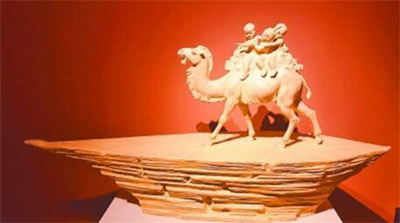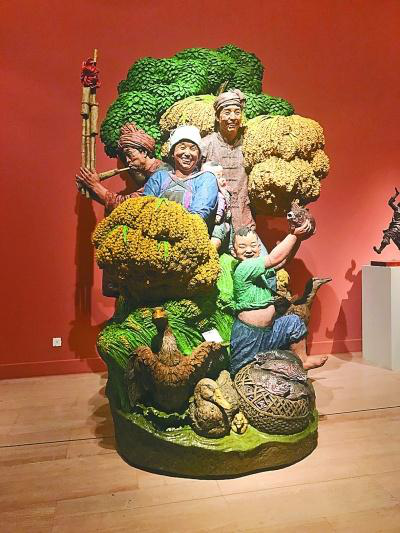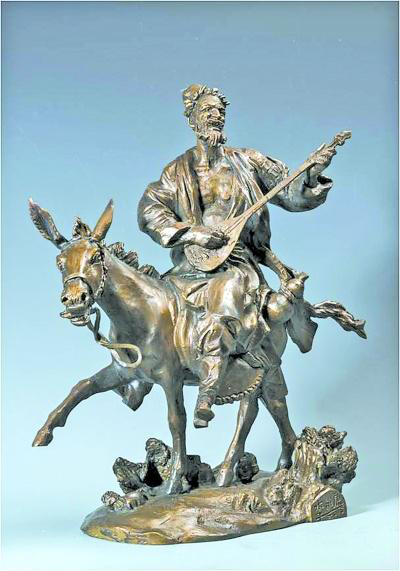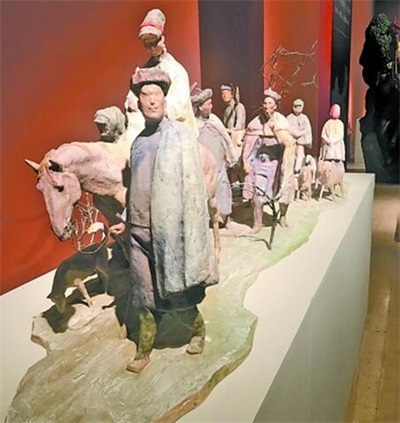aSaint General Group takes you through a new chapter of sculpting national unity - A look at the National Sculpture Art Exhibition
- Categories:Industry News
- Time of issue:2019-03-18 17:10
- Views:
(Summary description)Saint General Group National Sculpture Artwork Exhibition
aSaint General Group takes you through a new chapter of sculpting national unity - A look at the National Sculpture Art Exhibition
(Summary description)Saint General Group National Sculpture Artwork Exhibition
- Categories:Industry News
- Time of issue:2019-03-18 17:10
- Views:
Saint will take you through [70 years of new Chinese art
The art of sculpture is inextricably linked to the roots of Chinese culture. Ethnic themes, as an important area of art creation, have also become an important part of sculpture creation since the founding of New China. National emotions and contemporary concerns, the genetic heritage of multi-ethnic cultures, the outlook on the lives of various ethnic groups, historical, ethnic and cultural views can all be vividly and visually presented in sculptures through the form of art.
On the important occasion of the 70th anniversary of the founding of New China, on the journey of playing the strong voice of Chinese culture in the new era and realising the Chinese dream, and in the pace of the 56 nationalities moving forward together, the "China National Art Museum Celebrates the 70th Anniversary of the Founding of the People's Republic of China Series Exhibition: National Unity - National Sculpture The National Sculpture Exhibition" was recently inaugurated at the National Art Museum of China. The exhibition, organised by the National Art Museum of China and the China Urban Sculptors Association, has aroused unprecedented enthusiasm among artists and received positive responses from sculptors across the country.

The Silk Road Boat (sculpture) Cheng Yin

Harvest Ga (sculpture) Zhang Guangyang

Rice, Fish and Dong Family Love (Sculpture) Liu Qing

Singing to Beijing (Sculpture) by Li Yongkang
This exhibition is the first time since the founding of New China that the art of sculpture has been used comprehensively as a vehicle to celebrate the great unity of the nation, reflecting the cultural characteristics of each nation, becoming a window to highlight the national style, reflecting the unity and upward spirit of the people of all nationalities, and presenting new content, forms, levels and achievements of contemporary Chinese sculpture. As you stroll through the exhibition hall, many of the works present a vivid atmosphere of innovation in terms of artistic form, language, subject matter and concept. The gathering of the best works is of positive and far-reaching significance to the sorting and summarising of outstanding works of Chinese sculpture on ethnic themes, to the diversified development of the Chinese art ecology, and to the promotion and dissemination of Chinese sculpture art with ethnicity.
The exhibition is divided into two major chapters, "National Unity" and "Ethnic Groups", and the sophisticated curatorial thinking and unique exhibition style are in line with the "development of the frontier", "ethnic harmony" and "ethnicity". "The exhibition's curatorial approach and unique display style are in keeping with the historical and practical topics of 'development of the frontier', 'harmony of nationalities' and 'multi-ethnic cultural mix'. The chapter on "Ethnic Unity" uses figurative, abstract, imaginative and symbolic language to show the joy and pride of all ethnic groups in the same boat and in their integration into the Chinese family. The chapter on "Ethnicity" is a comprehensive reflection of the distinctive characters, traits and styles of the 56 ethnic groups in their different geographical and cultural contexts. Many of these masterpieces are eye-catching.
Wang Linyi, one of the pioneers of modern Chinese sculpture and a sculptor of the old generation, has created a large Chinese white jade relief sculpture, The Great Unity of Nations, which depicts, in a decorative style of language, the joyful celebration of the great unity of the various ethnic groups in song and dance.
March 3 (Sculpture) Feng Guohao

Grassland (Sculpture) Wu Weishan

People Rushing to the Market (sculpture) Wen Chao and Hu Bing
Wu Weishan's sculpture The Great Grassland adopts a realistic approach, using the broad and solid body of a Mongolian man to express the broad-mindedness and topsy-turvy nature of the Mongolian people.
Jing Yumin's 'Return to the East - The Epic of the Turks' uses the historical facts of the migration of the ethnic group as its source material, depicting the real events and sincere emotions of the Mongolian Turks who overcame all the difficulties to return to the embrace of the motherland with hard shapes and realistic techniques.
Li Yongkang's 'Singing to Beijing' takes a typical figure of ethnic unity as its source of creation, portraying the elderly Uyghur Kurban Tulum riding a donkey and playing a zither, singing all the way to Beijing, expressing the love of the people of all ethnic groups in Xinjiang for the motherland, embracing ethnic unity and singing praises of the prosperity and strength of the motherland.
Young sculptor Liu Qing's realistic, heavy-colour sculpture 'Rice, Fish and Dong Family Love' portrays the joy of the Dong people as they celebrate a bumper harvest. The work is vivid and full of life, and reflects the harmony and happiness of the people of all ethnic groups living and working in peace and contentment in the new era of economic boom of the motherland.
In addition, works such as Hand in the Sun by Li Ming, Spring is Beautiful by Tian Lawful and Legend of Manchu Creation by Lin Tong reflect the artists' experimentation and exploration of the combination of different materials; Zhu Zhiwei's Ode to Joy, Chen Liang's Love is Thick in Xiangleji and Zhang Kaixun's Family show the colourful and happy lives of people from all ethnic groups; Wang Chao's Land of One Arrow, Sun Yan's Jumping The works such as Wang Chao's The Land of One Arrow, Sun Yan's Jumping Bamboo Pole, and Huang Bingyi's Jing Dulcimer show the distinctive customs and styles of different ethnic groups through their fine portrayal of the dynamics of the characters.
Today's Chinese sculptors are actively exploring the connotations and boundaries of their sculptures with national themes as the carrier, and their works show a richness of the times, society and humanity, reflecting not only the diversity of artistic languages, but also the diversity of the aesthetic pursuits and perspectives of the creators. From the appreciation of different works, we can see the inheritance of tradition and highly innovative breakthroughs, highlighting individual faces while revealing the overall appearance of the contemporary Chinese sculpture community, vividly demonstrating the national spirit and cultural confidence in the creation of sculpture in the new era.
As a direct and effective way of casting and reflecting the sense of Chinese community, sculpture embodies the national sentiment and mission of the times of generations of creators. As the expression of national culture, national spirit and national character, sculptors have the responsibility to take up the responsibility of building the spiritual home of the Chinese nation, creating statues for today's great era, for the people of all ethnic groups and for the spirit of China.
Scan the QR code to read on your phone
Contact Us
>Tel:0592-5965297 / 13906021501
>E-mail:shengjianggroup@126.com
>Address:alloves industrial park No.149 West Genghe Avenue, Genghe Town, Gaoming District, Foshan, Guangdong, China

Scan the QR code to follow us
Copyright © 2018-2019 Xiamen Shengjiang Group Co., Ltd. All Rights Reserved
闽ICP备15017606号-1 Power By:300.cn SEO
Copyright © 2018-2019 Xiamen Shengjiang Group Co., Ltd. All Rights Reserved SEO
闽ICP备2023010864号 Power By:300.cn





